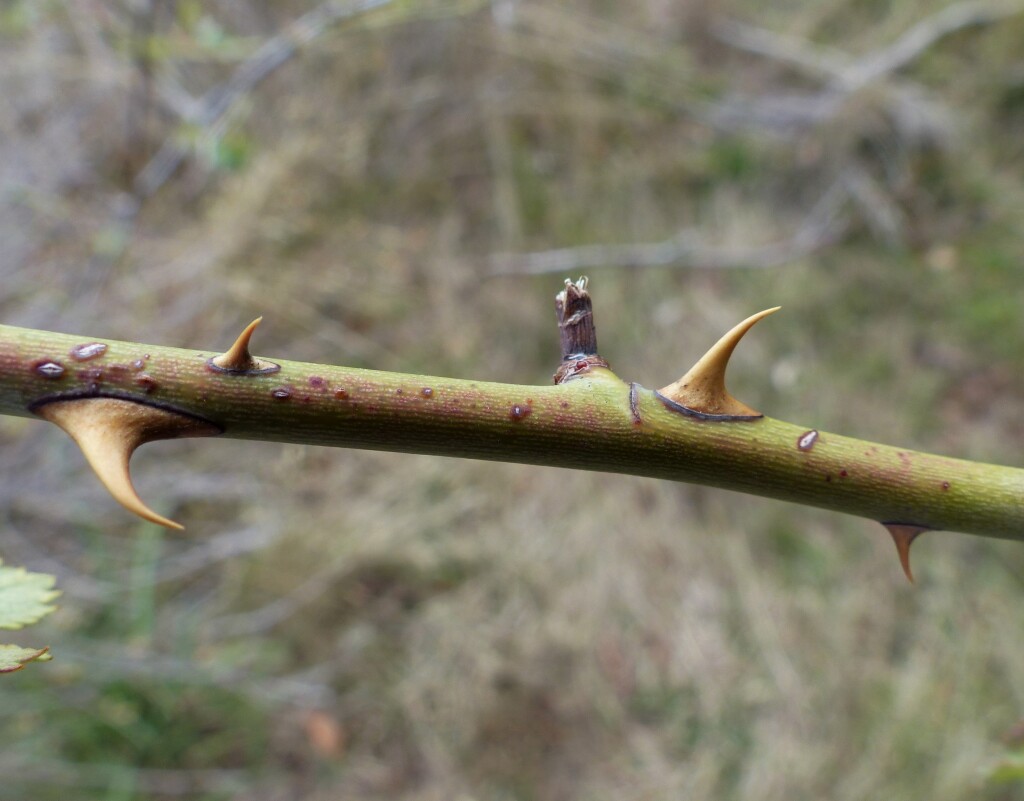Rosa
Perennial, erect, trailing or climbing shrubs, usually deciduous (but not in Victoria); stems usually with prickles that detach with age, glabrous or pubescent, often also glandular-hairy. Leaves alternate, usually pinnate, rarely 1-foliolate; leaflets usually toothed; stipules mostly adnate to petiole. Inflorescence terminal, corymbose or flowers solitary; bracts present; epicalyx absent. Flowers usually large and showy. Sepals usually 5; petals 5 or more; hypanthium urceolate, becoming fleshy and highly coloured in fruit; stamens numerous, inserted on rim of hypanthium; carpels numerous, ovaries superior, styles protruding through the orifice of the disc, sometimes forming a short column; ovule 1 per carpel. Fruit a pseudocarp of numerous achenes enclosed within the swollen hypanthium, commonly termed a 'hip'.
About 250 species in Europe, Asia and North America; 10 species naturalised in Australia.
Many species, hybrids and cultivars are popular garden plants that are grown for their ornamental and/or perfumed flowers. A number of these often persist in abandoned gardens but never become truly naturalised.
Jeanes, J.A.; Jobson, P.C. (1996). Rosaceae. In: Walsh, N.G.; Entwisle, T.J., Flora of Victoria Vol. 3, Dicotyledons Winteraceae to Myrtaceae, pp. 556–585. Inkata Press, Melbourne.
 Spinning
Spinning


